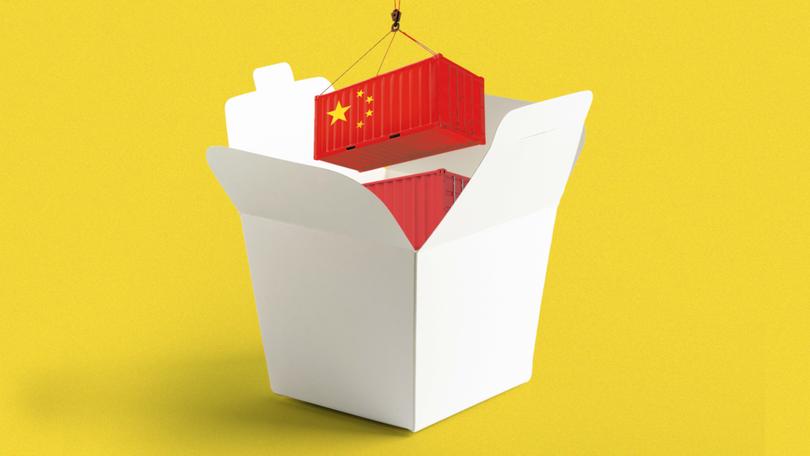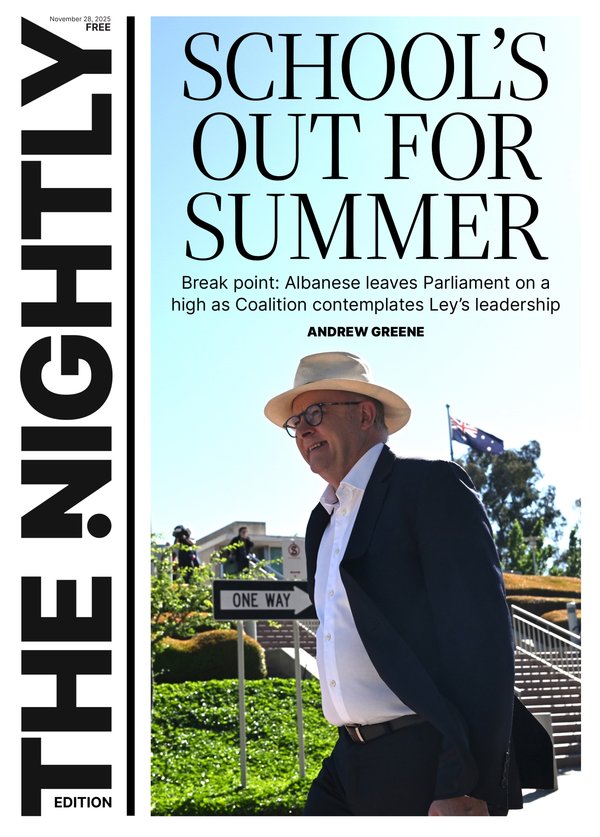THE ECONOMIST: The tariff takeaways as world markets feast on America’s succulent Chinese deal

After a busy weekend of talks in Geneva, an impatient reporter asked when the results would be announced.
Li Chenggang, China’s trade representative, replied with a smile and an old saying: “Good food is never too late.”
The dish, when it at last arrived on May 12, was surprisingly tasty. America has agreed to cut the “reciprocal” tariffs it imposed on China last month from 125 per cent to a more digestible 10 per cent for at least 90 days.
Sign up to The Nightly's newsletters.
Get the first look at the digital newspaper, curated daily stories and breaking headlines delivered to your inbox.
By continuing you agree to our Terms and Privacy Policy.China has agreed to do the same. It has also agreed to roll back other retaliatory measures, such as restrictions on sales of rare-earth minerals.

They include an American levy of 20 per cent that Donald Trump introduced to punish China for making the ingredients of fentanyl, a synthetic opioid.
The result is a combination of tariffs that are far higher than Mr Trump inherited when he returned to office in January but much lower than seemed likely a few weeks ago, when Mr Trump was admonishing China for a “lack of respect” and China was digging in for a protracted trade war.
Over the next 90 days China will face a 10 per cent reciprocal tariff like everyone else, even though it was the only country that dared to defy America.
Markets gobbled up the news. The US dollar rose by about one per cent against the euro. The S&P 500 index of big American firms jumped by 2.6 per cent when it opened on May 12.
Stockmarkets in mainland China had closed before the agreement was revealed. But in Hong Kong the Hang Seng index, which includes many mainland companies, rose by 1.7 per cent in the final hour of trading.

Before the talks began, Scott Bessent, America’s treasury secretary, had said the two sides were seeking merely to agree on what to talk about. Over the weekend Mr Trump posted on social media that a tariff of 80 per cent on China “seems right!”
When the negotiating teams were seen leaving the venue after only a few hours on Saturday, some feared the talks had broken down. In fact, the negotiators were just going for lunch. Good food isn’t always late.
What, then, explains China’s unexpected success? Jamieson Greer, America’s trade representative, gave some credit to the venue. The negotiations took place not in a “sterile” hotel, but in the intimate rooms and attractive grounds of an ambassador’s residence.
According to Mr Greer, many of the most difficult issues were discussed on patio sofas under a beautiful tree.
Meanwhile, the state of trade between the two countries had become much less comfortable. Chinese exports to America fell by 21 per cent in April, compared with a year earlier.
The prices of Chinese goods listed on the websites of big American retailers have been rising slowly but relentlessly, according to data scraped by Alberto Cavallo of Harvard University and his co-authors.
In a press conference on May 12 Mr Bessent all but conceded that tariffs on China had gotten out of hand. Mr Trump had announced a “reciprocal” tariff of 34 per cent on China on April 2, or “Liberation Day”, as the president called it.
That had quickly jumped to 84 per cent and then 125 per cent in response to Chinese retaliation. The result was the “equivalent of an embargo”, which neither country wanted, Mr Bessent said.
The Geneva agreement, he emphasised, includes a commitment by Chinese officials to ongoing talks.
If that “mechanism” had already been in place, the “unfortunate escalations” that followed Mr Trump’s announcement on April 2 could have been avoided, he said.
It was an extraordinary admission. If only America’s top economic officials had hit upon the ingenious idea of meeting their Chinese counterparts in person before Liberation Day, the world’s two biggest economies might have been spared a great deal of turmoil.
Financial chaos following Liberation Day, which included a bond-market revolt and a plunging dollar, helped Mr Bessent persuade Mr Trump to offer a 90-day reprieve to all of America’s trading partners on April 9th. After the Geneva talks, China has now been added to the list.
Its reciprocal tariff of 10 per cent is as low as any country enjoys. Moreover, China faces this low reciprocal tariff even though it, unlike America’s other trading partners, still has a 10 per cent retaliatory tariff in place.
The big question is what happens after 90 days. Most trade agreements take far longer to negotiate. And America is already trying to hammer out deals with 16 other economies at the same time.
Mr Bessent was careful to point out that the 34 per cent tariff chosen for China on Liberation Day is not a dead letter.
It remains the default to which America will return after the pause, if nothing happens in the interim.
To forestall that possibility China could conceivably agree to buy more commodities, such as oil or soyabeans, from America — goods that it might anyway have bought from elsewhere. It could also convince America that it is working harder to crack down on the chemical companies that produce fentanyl ingredients.
Mr Bessent was impressed that China’s delegation included the minister of public security, who has been put in charge of fentanyl co-operation. Maybe the two superpowers will orchestrate a compromise in which America raises the reciprocal tariff back to 34 per cent, but removes the 20 per cent fentanyl penalty.
That might be enough to turn the Swiss truce into a more lasting peace.
The Chinese adage about the timing of good food often adds a line: “Interesting talk is never too slow.”
If they are to avoid a return to tariff turmoil, China and America must hope that their talks over the next 90 days are full of interest and not too slow.
Originally published as America has given China a strangely good tariff deal
